
The past few years have seen the accelerated development of display technologies. The display industry is turning into a battleground for innovative advances such as OLED, micro-LED, and QD displays. New displays are grabbing the attention of consumers with clearer image quality, shorter response times, and enhanced color reproduction using cutting-edge technology. The ultimate goal for these displays is to present an image optimized for the human eye. Simply making slight spec improvements is no longer enough. This article will explore the significance of display technologies that resulted from the pursuit of this goal.
The Reason Why The Human Eye Is Drawn To True Black

There is fierce competition in the display market to offer a greater contrast ratio, represented often by true black or deep black. Increasing the contrast ratio, which refers to the ratio between the brightest and darkest areas of a frame, allows a display to create advanced image quality. But how does this exactly work?
The visual cells in the human eye that detect light consist of cone cells, which tell different colors apart by detecting bright light, and rod cells, which differentiate darkness from brightness by responding to dim light. The retina of the human eye contains about six million cone cells and about 120 million rod cells. The latter, which is larger in number, detects light acting as the photoreceptor cells in the retina.
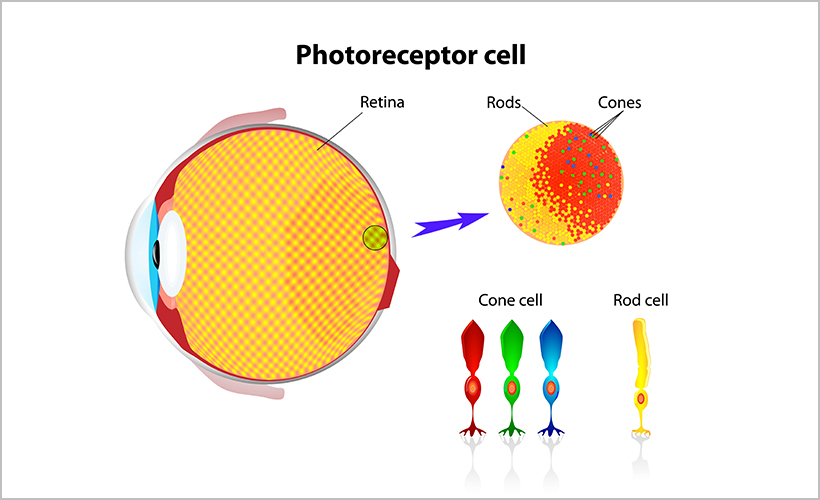
Rod cells are extremely sensitive. Their level of sensitivity, in fact, is 100 times that of cone cells. In other words, the human eye is much more sensitive to changes in the contrast ratio rather than a change in color. This explains why improvement in the contrast ratio of a display results in users perceiving the colors to be clearer. It is also the reason why many of the display technologies today are focused on improving the contrast ratio.
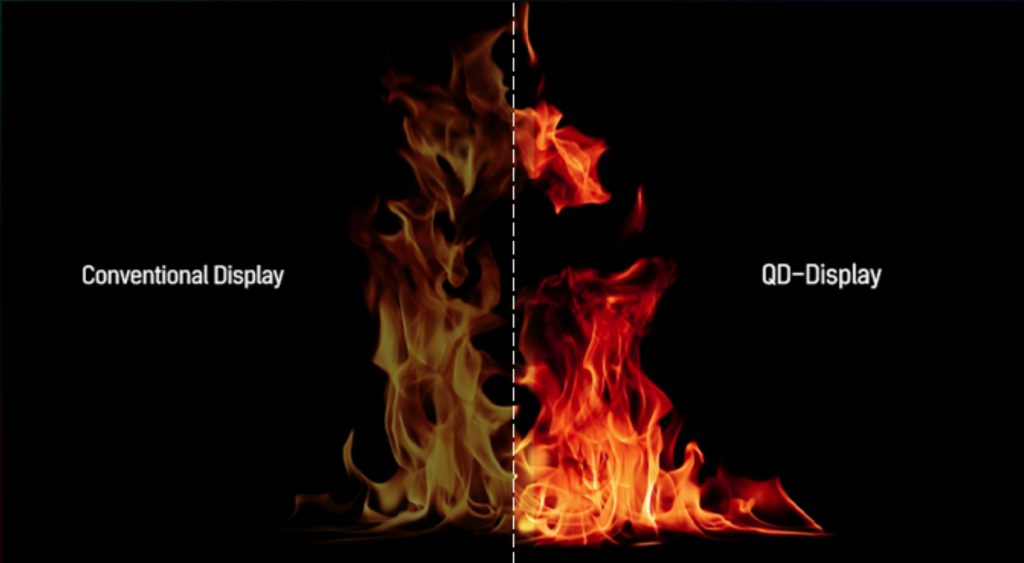
Experts studying evolution theorize that rod cells developed first in the same way they did in other animal species, and the development of cone cells followed to tell colors apart. Achieving a greater contrast ratio is an attempt to create something that mimics the most basic function of the human eye.
Evolution of Display Pixels for the Human Eye
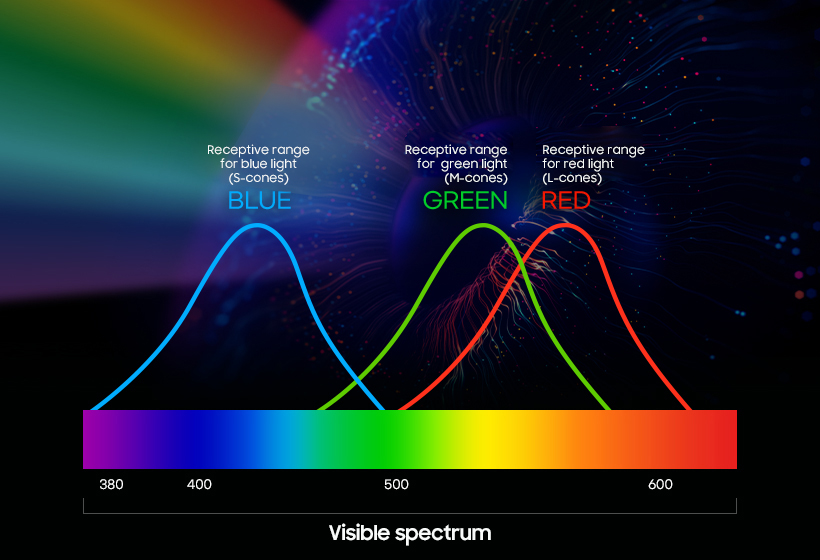
Why are display pixels composed of red, green, and blue (RGB)? The answer is simple: the cone cells in the human eye detect colors consisting of RGB. The cones respond to different visible wavelengths: for instance, L-cones detect long wavelengths, while M-cones detect medium wavelengths and S-cones short wavelengths. These cells respond respectively to red, green, and blue wavelengths.
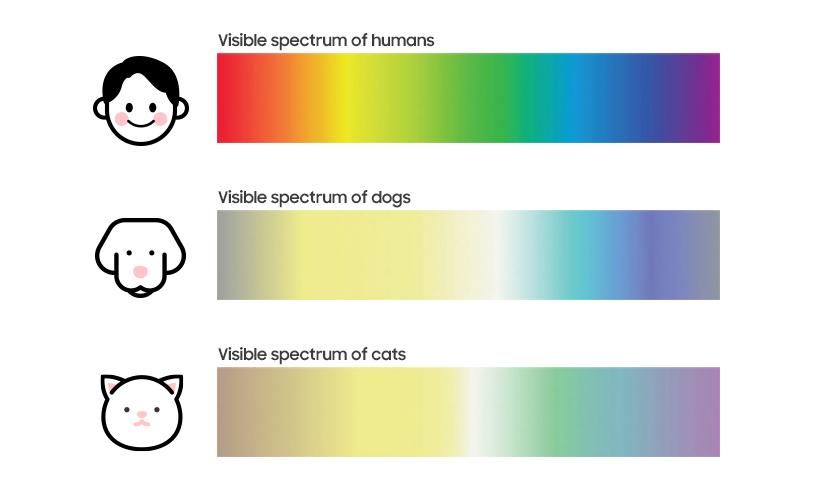
In fact, mammals usually have only two types of cone cells. Cats and dogs lack cone cells that can detect red; therefore, they cannot tell red apart from a green background. It is often inferred that humans probably started out with a similar level of visual perception as these animals. Mankind in the Mesozoic Era had to hunt at night, and therefore, differentiating brightness from darkness was more important. Through evolution, however, humans started collecting fruits in forests, which resulted in the development of cone cells that can detect red, which has the longest visible wavelength. Evolutionary theory suggests that this is how the human eye developed to detect colors using the RGB spectrum.
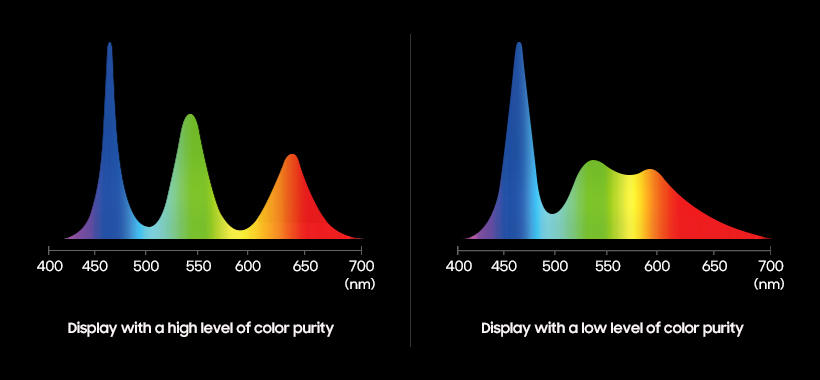
Just as the RGB colors in the visual system have evolved in line with the evolution of mankind, display technologies constantly evolve in order to better capture true RGB colors. When sub-pixels in a display pixel can each clearly reproduce RGB — or when RGB colors are not mixed and appear clearly separated — colors are less likely to blend with each other, resulting in clearer reproduction of colors.
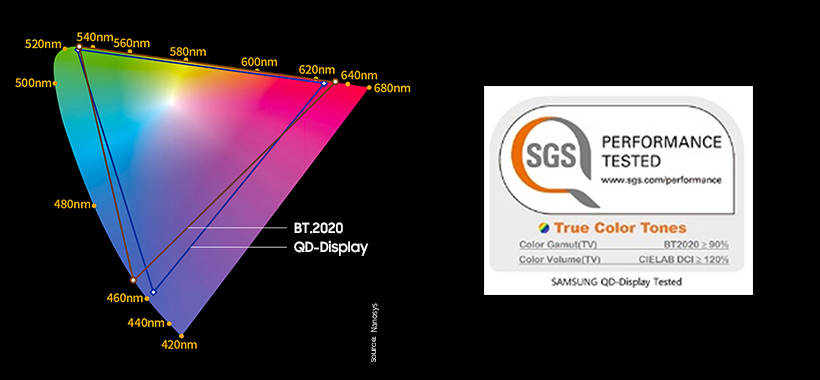
Thanks to technological evolution, a QD display’s color reproduction is more than 90% based on BT.2020*, and the color volume (the range of colors a display can reproduce at different levels of brightness) is over 120% based on DCI-P3, receiving the True Color Tones certification. This is the closest that it gets to the visual perception of the human eye using currently available technology.
※ BT.2020 : Parameter values for ultra-high definition (UHD) television systems set by the International Telecommunication Union, an organization that sets international standards
This is just a small glimpse into how human visual perception is the driving factor behind the technological evolution of displays. Such technological advances will hopefully realize the ultimate goal of creating the most optimized display for the human eye.

Seoul St. Mary's Hospital at the Catholic University of Korea

